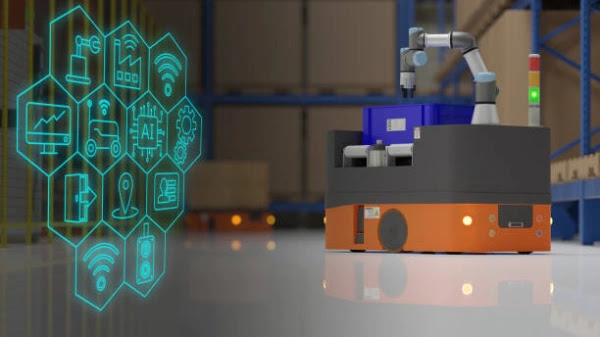Featured
- Get link
- X
- Other Apps
Smart Home Automation
Transforming Living Spaces with Voice Assistants
Introduction
The concept of smart home automation has evolved
significantly in recent years, driven by advancements in technology and the
growing demand for convenience, efficiency, and connectivity. At the heart of
this transformation are voice assistants, such as Amazon Alexa, Google Assistant, and Apple Siri, which serve as the central control hubs for managing
smart devices and enabling seamless interaction through voice commands. In this
article, we explore the integration of voice assistants in smart home automation
systems, examining their functionality, benefits, and impact on the way we live
and interact with our living spaces.
- Understanding
Smart Home Automation: Smart home automation involves the integration
of Internet of Things (IoT) devices, sensors, and appliances within a home
environment, enabling remote monitoring, control, and automation of
various functions such as lighting, heating, security, entertainment, and
more. These devices communicate with each other and with centralized
control systems, often through wireless connectivity protocols such as
Wi-Fi, Zigbee, or Z-Wave, to create a cohesive and interconnected
ecosystem.
- Role
of Voice Assistants in Smart Home Automation: Voice assistants serve
as the primary interface for controlling and managing smart home devices,
offering hands-free operation and natural language interaction. Users can
issue voice commands to perform a wide range of tasks, from adjusting the
thermostat and dimming the lights to playing music and setting reminders,
all without needing to physically interact with individual devices or
interfaces.
- Functionality
and Features: Voice assistants offer a multitude of features and
capabilities that enhance the functionality of smart home automation
systems: a. Device Control: Voice assistants can control a diverse
array of smart devices, including smart lights, thermostats, locks,
cameras, speakers, and more, allowing users to adjust settings, activate
routines, and perform tasks with simple voice commands. b. Integration
with Third-party Services: Voice assistants integrate seamlessly with
a wide range of third-party services and platforms, including smart home
device manufacturers, streaming services, online retailers, and
productivity tools, enabling users to access and interact with these
services through voice commands. c. Customizable Routines and
Automations: Users can create customized routines and automations
using voice assistants, allowing them to automate repetitive tasks,
schedule actions based on time or events, and orchestrate complex
sequences of actions across multiple devices with a single voice command.
d. Information and Entertainment: Voice assistants provide access
to a wealth of information and entertainment content, including weather
forecasts, news updates, sports scores, music streaming, audiobooks,
podcasts, and more, enhancing the overall user experience.
- Benefits
of Voice Assistants in Smart Homes: Voice assistants offer numerous
benefits for homeowners, including: a. Convenience: Voice control
enables hands-free operation of smart devices, making it easy and
convenient to perform tasks and manage the home environment, particularly
for individuals with mobility issues or disabilities. b. Efficiency:
Voice commands streamline interactions with smart devices, reducing the
need to navigate complex user interfaces or use multiple apps, saving time
and effort in daily routines. c. Personalization: Voice assistants
learn user preferences and behavior over time, enabling personalized
experiences and recommendations tailored to individual needs and
preferences. d. Accessibility: Voice control makes smart home
technology more accessible to a broader range of users, including elderly
individuals, children, and those who may not be familiar with or
comfortable using traditional interfaces. e. Integration and
Interoperability: Voice assistants serve as central hubs for
integrating and controlling diverse smart devices and services, fostering
interoperability and seamless integration within the smart home ecosystem.
- Privacy
and Security Considerations: While voice assistants offer convenience
and functionality, they also raise concerns related to privacy and
security: a. Data Privacy: Voice assistants process and store user
interactions and voice commands, raising concerns about data privacy and
potential misuse of personal information. Users should be aware of the
data collection practices of voice assistant providers and take steps to
safeguard their privacy, such as reviewing privacy settings and
controlling data sharing preferences. b. Security Vulnerabilities:
Voice assistants may be vulnerable to security threats such as hacking,
unauthorized access, and eavesdropping, particularly if not properly
configured or secured. Manufacturers and users should implement robust
security measures, such as strong authentication, encryption, and regular
software updates, to mitigate these risks and protect against security
breaches.
- Future
Trends and Developments: The future of smart home automation and voice
assistants is marked by ongoing innovation and development, with several
emerging trends shaping the landscape: a. Natural Language
Understanding: Voice assistants are becoming increasingly adept at
understanding and responding to natural language commands, thanks to
advancements in natural language processing (NLP) and machine learning. b.
Contextual Awareness: Voice assistants are gaining contextual
awareness, enabling them to understand user preferences, habits, and
situational context to provide more personalized and relevant responses
and recommendations. c. Integration with AI and IoT: Voice
assistants are integrating with artificial intelligence (AI) and IoT
technologies to enable more sophisticated automation, predictive
analytics, and proactive assistance, enhancing the overall intelligence
and capabilities of smart home systems. d. Expansion of Ecosystem:
Voice assistant ecosystems are expanding to include a broader range of
devices, services, and partners, enabling greater interoperability and
integration across different platforms and domains.
Conclusion
Smart home automation, powered by voice assistants,
represents a significant evolution in how we interact with and control our
living spaces. By leveraging the capabilities of voice control, users can enjoy
greater convenience, efficiency, and personalization in managing their smart
devices and routines. However, as with any emerging technology, it is essential
to consider privacy and security implications and adopt best practices to
ensure a safe and secure smart home environment. Looking ahead, continued
advancements in voice assistant technology and smart home automation promise to
further enhance the functionality, intelligence, and interoperability of smart
homes, ushering in a new era of connected living.
- Get link
- X
- Other Apps

